It’s safe to say that the majority of you are aware that the history of the United States is characterized by a fluctuating relationship with civil rights and egregious legislation. These were not merely unnecessary or excessive laws. Instead, these laws we’re talking about put the safety of innocent people at risk. They were dreadful laws that violated our civil rights, focusing on people because of their race, where they were born, or even their sexual orientation. The aftermath of these unjust laws resulted in many deaths and resulted in a continued lack of trust in the government that still exists today.
As you will see in this list, dedicated civil rights groups like the American Civil Liberties Union (ACLU) are on the front lines, fighting to make sure we avoid laws that are hateful, discriminatory, or downright unfair. While they have made significant progress, more work is needed. As the saying goes, “Those who do not learn history are doomed to repeat it,” so take a trip through history with us as we visit 25 Crazy Laws You Wouldn’t Believe America Would Still Have If It Weren’t For Civil Rights (and let’s not repeat history).

Laws Against Inter-Racial Marriage
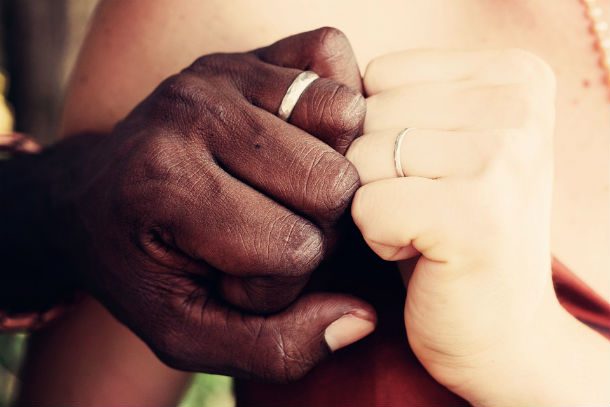 Source: www.civilrights.org, www.aclu.org/feature/loving, Image: pixabay.com
Source: www.civilrights.org, www.aclu.org/feature/loving, Image: pixabay.com Marriage between two people of different skin colors may seem common place in many places today. Many people wouldn’t think twice about it. However, before 1967, inter-racial marriage was illegal in many states. In the Supreme Court case, Loving vs. Virginia, Mildred Jeter and Richard Loving, represented by the ACLU, took a stand against the state of Virginia and the several instances of discrimination they faced because of their relationship. The Court ruled in favor of the couple, and state bans on inter-racial marriage were deemed unconstitutional.
Separate but Equal
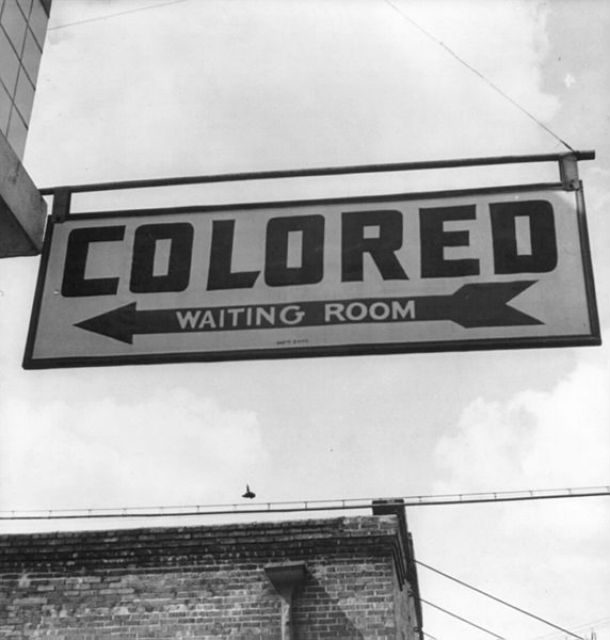 Source: civilrights.org, civilrights.findlaw.com, Image: wikimedia commons (public domain: published b/w 1923 & 1977)
Source: civilrights.org, civilrights.findlaw.com, Image: wikimedia commons (public domain: published b/w 1923 & 1977) There are certain laws throughout history that might make you really wonder what people were thinking. In a 1896 Supreme Court ruling, Plessy vs. Ferguson, the Supreme Court made it legal to segregate public places as long as the treatment was equal. Luckily, to make a long and brutal story short, after many sit-ins and many other peaceful protests, the Civil Rights Act of 1964 prohibited this type of discrimination.
Segregation of Public Schools
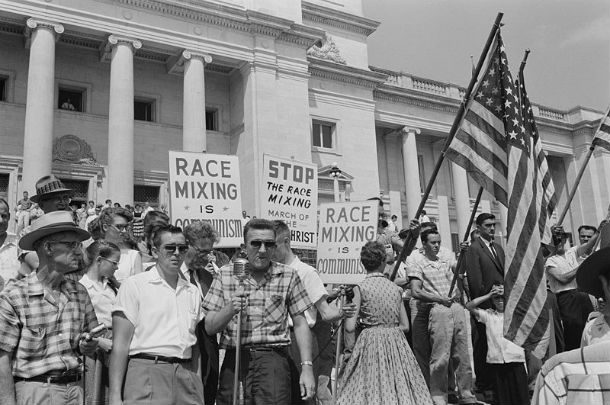 Source: civilrights.org, civilrights.findlaw.com, Image: wikimedia commons: no known copyright restrictions
Source: civilrights.org, civilrights.findlaw.com, Image: wikimedia commons: no known copyright restrictions Laws allowing segregation in public places like restaurants and hotels led to laws allowing the segregation of public schools. While these schools were supposed to be equal, that wasn’t the case. The schools that African American students attended didn’t receive much funding, and the education they received was terrible compared to that of white students.
In 1954, the Supreme Court ruled that in places of public education, “Separate but Equal” didn’t apply (Brown vs. Board of Education) and was a violation of the 14th Amendment.
While this ruling was a victory for civil rights, many states remained stubborn, and in some instances the National Guard had to be called in to get children to school safely. At one point in Arkansas, all public schools were completely closed to prevent any black students from attending. This closure lasted for about a year until in 1959, the Supreme Courts had to step in again to order them re-opened.
Laws Against Same-Sex Marriage
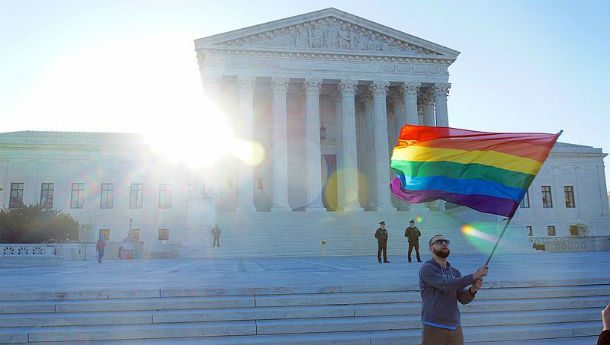 Source: civilrights.org, aclu.org
Source: civilrights.org, aclu.org While Loving vs. Virginia was a victory for marriage equality in regards to race, marriage equality in regards to same-sex couples took much longer to happen. Recently, in 2015, the Supreme Court struck down any state prohibitions of same-sex marriage in the ACLU’s Obergefell v. Hodges case.
Three-Fifths Compromise
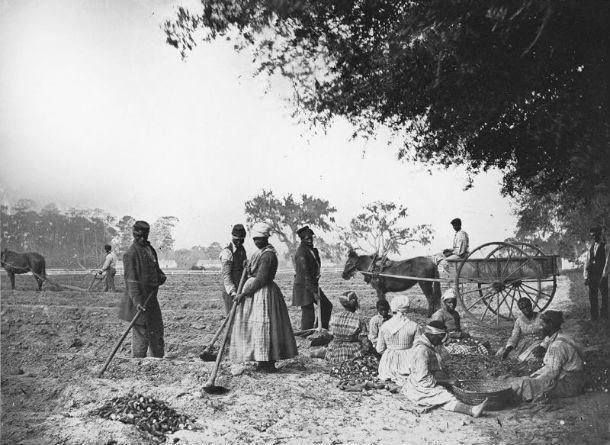 Source: constitution.laws.com, image: wikimedia commons (public domain)
Source: constitution.laws.com, image: wikimedia commons (public domain) In 1787, while the constitution was being drafted, there was a controversy over how population within each state should be counted. As slaves were considered property and not as people to be counted, the states stood to lose a number of Representatives in the House. A “compromise” was struck to count each slave as three-fifths of a white person in order to increase the number of Representatives in each state (particularly southern states). This horrible law was finally rendered obsolete in 1865 with the passing of the 13th amendment.
Marriage to Non or Ineligible-Citizens
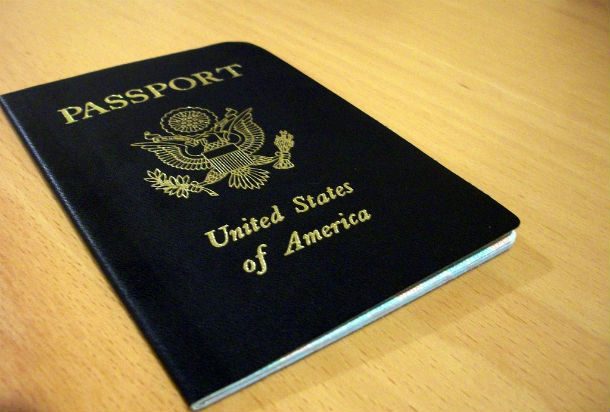 Source: http://immigrationtounitedstates.org
Source: http://immigrationtounitedstates.org We hear of some people marrying others so that they can obtain citizenship. However, did you know at one point in US history there was a law that made women choose between marrying the person they loved or losing their citizenship?
The law stated if a woman married an “ineligible or non-citizen,” she would be stripped of her own citizenship. The premise was that women took the nationality of their husbands. Since the husbands were not US citizens, the women who married them lost their US citizenship.
This law, the Cable Act, was finally changed in 1931 to allow women to at least be able to marry men from select countries and retain their citizenship; the Act was put to a complete end in 1936.
Women Not Allowed to Vote
 Source: history.com, Image: flickr (no known copyright restrictions)
Source: history.com, Image: flickr (no known copyright restrictions) It’s no secret that women did not have the same rights as men at the founding of the United States. Women’s rights movements didn’t get off the ground fully on a national level until 1848 with the Seneca Falls Convention. It wasn’t until the ratification of the 19th Amendment in August of 1920 (over 70 years later) that women were granted the right to vote.
Indian Removal Act of 1830
 Source: unitedliberty.org, history.com, encyclopedia.com, americaslibrary.gov
Source: unitedliberty.org, history.com, encyclopedia.com, americaslibrary.gov Some laws cause damage that can’t be “repealed” or fixed. In 1830, the Jackson administration was given the right to “negotiate” with Native American tribes, forcing them to relocate from lands they had held long before the establishment of the US. This law opened the door for the Trail of Tears, a mass-relocation of Native Americans that resulted in an appalling number of deaths.
In 1924, Native Americans were granted US citizenship, and in 1968, the Indian Civil Rights Act granted Native American tribes many of the same rights that are stated in the Bill of Rights.
Japanese-American Internment Camps
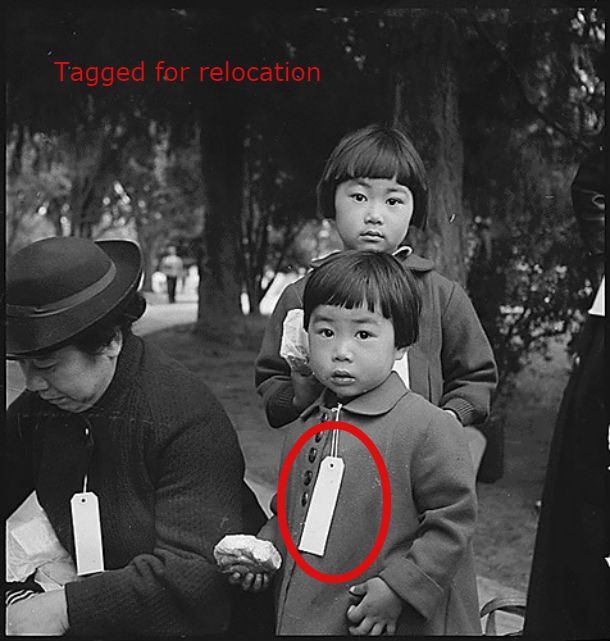 Source: unitedliberty.org, Image: wikimedia commons (public domain)
Source: unitedliberty.org, Image: wikimedia commons (public domain) Just because someone is granted citizenship, it doesn’t mean that they are free from the possibility of unjust treatment. In 1942, President Roosevelt signed off on Executive Order 9066, authorizing the relocation of Japanese, German, and Italian Americans (including those born in the US) to internment camps. The Supreme Court signed off on it in 1944. It wasn’t until 1988 that official apologies were made and reparations were issued.
Dred Scott Decision: People as Property
 Source: civilrights.org, Image: wikimedia commons (public domain: published before 1923)
Source: civilrights.org, Image: wikimedia commons (public domain: published before 1923) Having a group of people classified as “lesser” and as “property” has been part of US history since before the beginning. In 1857, Dred Scott sued for his freedom and was denied. It was established that slaves were not citizens and had no right to sue. It wasn’t until the passing of the 14th amendment in 1868 that African Americans were granted full citizenship.
State Laws Against Homosexual Acts Between Consenting Adults
 Source: civilrights.org
Source: civilrights.org At one point in recent time, what two men or two women did in their own bedroom could land them in jail or with a heavy fine. In fact, prior to 1973, the American Psychiatric Association actually considered those in the LGBT community to have a mental illness. Fortunately, the APA started to see things differently and with the American Medical Association called for a repeal of laws against any same-sex acts between consenting adults in 1975. However, the Supreme Court didn’t act until 1984, when they ruled that states don’t have the right to ban such acts.
Anti-Abortion Laws
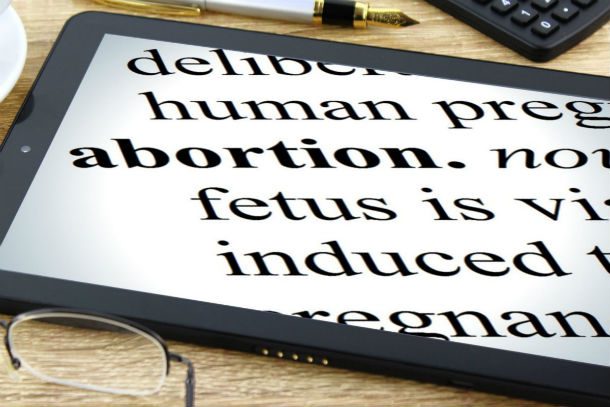 Source: civilrights.org
Source: civilrights.org There are few hot topics debated as much as a woman’s right to an abortion. While the debate continues, it was a huge victory to pro-choice advocates when in 1973, the Supreme Court ruled to strike down most states’ restrictive abortion laws.
Interested in learning more about the history of women’s rights? Take a look at 25 Intriguing Facts About The History Of The Feminist Movement.
No Protection for Americans with Disabilities
 Source: civilrights.org
Source: civilrights.org Prior to 1990, Americans with disabilities had no protection in how they worked or lived. To give just one example, this meant that any person in a wheelchair might have been unable to get a job because of a lack of a ramp to get in the front door. While there were no specific laws discriminating against people with disabilities, these “little oversights” in making workplaces accessible to everyone put many Americans at a disadvantage.
In 1990, Congress passed the Americans with Disabilities Act, requiring public places to be accessible to those with disabilities and nixing job discrimination practices against those same people.
Poll Tax/Literacy Test
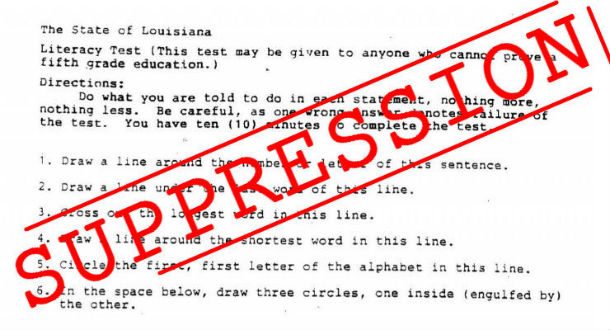 Source: civilrights.org, kingencyclopedia.stanford.edu
Source: civilrights.org, kingencyclopedia.stanford.edu When African Americans were given the right to vote with the passing of the 15th amendment, the states still found a way to prohibit them from voting. Many states required people to not only pass a literacy test, but also pay a poll tax. Therefore, anyone who couldn’t pay or couldn’t read were excluded from casting their vote at the polls. After the efforts of people like Martin Luther King Jr., these obstacles to voter rights were finally abolished in 1965 with the passing of the Voting Rights Act.
No Equal Housing Opportunities
 Source: civilrights.findlaw.com
Source: civilrights.findlaw.com How would you feel if a landlord denied you an apartment just because you were different from them? This was a reality for many Americans until the passage of the Fair Housing Act (part of the Civil Rights Act) in 1968. Before this, minorities were often prevented from purchasing housing in certain areas, effectively creating segregated communities. Unfortunately, this first Housing Act didn’t work very well, and Congress made amendments in 1988, allowing the Departments of Justice and Housing and Urban Development a large role in enforcing the law.
Ban Against Gays Serving in the Military
 Source: www.britannica.com, aclu.org, www.usni.org Image: Pixabay
Source: www.britannica.com, aclu.org, www.usni.org Image: Pixabay There’s no doubt that there have been some backwards fears regarding the LBGT community. Starting during World War II, there was a ban on LGBT individuals serving in the US military due to the fear they had an “aggressive personality disorder.” Even men who possessed “feminine characteristics” could be dismissed from the military. Homophobic much?
As a small step in the right direction, President Clinton enacted “Don’t Ask, Don’t Tell” in 1993. Even with this policy, the military would cut the service member’s severance in half if they were involuntarily discharged from service due to “homosexuality.” So…We won’t ask; you don’t tell, but if we find out, we’ll discharge you and cut your separation pay in half. In 2010, the ACLU won a major victory on behalf of all servicemen and women who had been discharged under this policy. In Collins vs. the United States, the Court ruled in favor of Collins and other service members included in the class-action law suit.
Finally, in 2011, President Obama lifted any ban on gays being able to openly serve in the military.
Affirmative Action
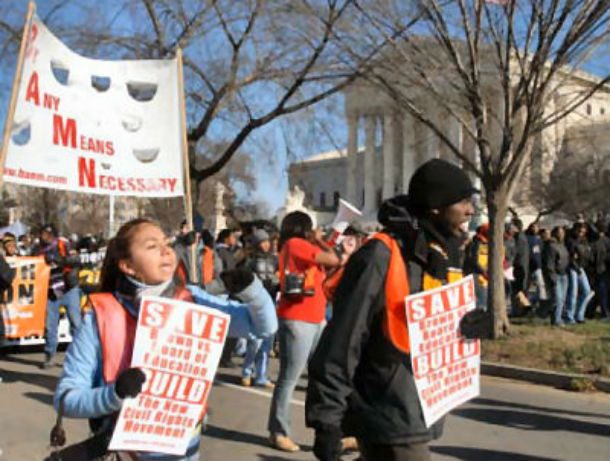 Source: pewresearch.org
Source: pewresearch.org After years of being relegated to women’s schools or historically black colleges, affirmative action laws are laws that require places of higher education to seek out and admit students from minority groups based on both gender and race. As recently as 2014, the Supreme Court has ruled that Affirmative Action laws are at the discretion of the state.
No Protection from Age Discrimination
 Source: civilrights.org
Source: civilrights.org Much like those American’s with disabilities, until 1967, older adults could be turned down for a new job or fired from current jobs. They could also be denied the ability to rent or buy a home just because of their age. Thankfully, the Age Discrimination Act of 1967 prevented employers from discriminating against employees and opportunity based on age. This act also prohibits discrimination due to age from any housing provider who receives funding from the federal government.
Laws Preventing Same-Sex Couples from Adopting Children
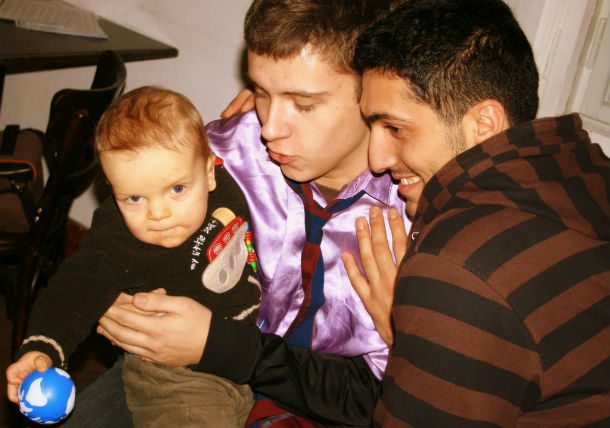 Source: aclualabama.org, orlandosentinal.com
Source: aclualabama.org, orlandosentinal.com In addition to the crazy laws in regards to LGBT relationships, there have been crazy laws in regards to adoption across the board. Adoption is a difficult legal process with lots of red tape. To further complicate matters, in the past, most states didn’t grant the adoption of children to couples involved in a same-sex relationship. Luckily, most states are now changing these laws. Recently, the ACLU of Alabama won a major victory when the state overturned their ban on adoptions to gay couples. This recent victory is a sign that more and more states are recognizing that there are loving homes out there for children, no matter the sexual orientation of the adoptive parents.
Private Schools, Racial Discrimination, and Tax Exemption
 Source: civilrights.org, Image: pixabay
Source: civilrights.org, Image: pixabay While racial discrimination was outlawed in public education, what about private education?
While we’ve showed some of the horrible laws created and upheld by the US government, here is one place the US government got things right. In regards to private education, the IRS denied tax-exempt status to private schools that practiced discrimination. In the 1983 case Bob Jones University vs the United States, the Supreme Court decided to uphold that IRS rule.
LGBT Labeled a Risk to National Security
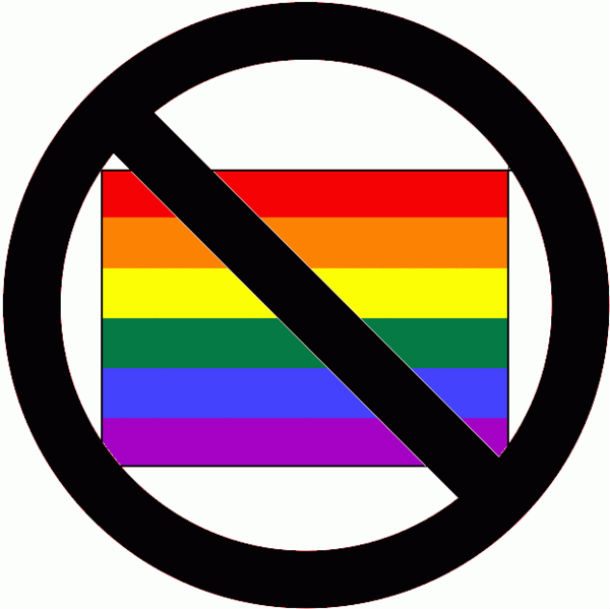 Source: usni.org, Image: wikimedia commons (public domain via author)
Source: usni.org, Image: wikimedia commons (public domain via author) In 1953, President Dwight D Eisenhower signed Executive Order 10450 in the name of national security. This order prevented any member of any group considered to be subversive in nature from being federal employees. While that may sound legit to some on the surface, the Order also listed “sexual perversion” as a security risk. Based on how the LGBT community was considered at that point in time, you can guess how that affected many people’s jobs.
Chinese Exclusion Act
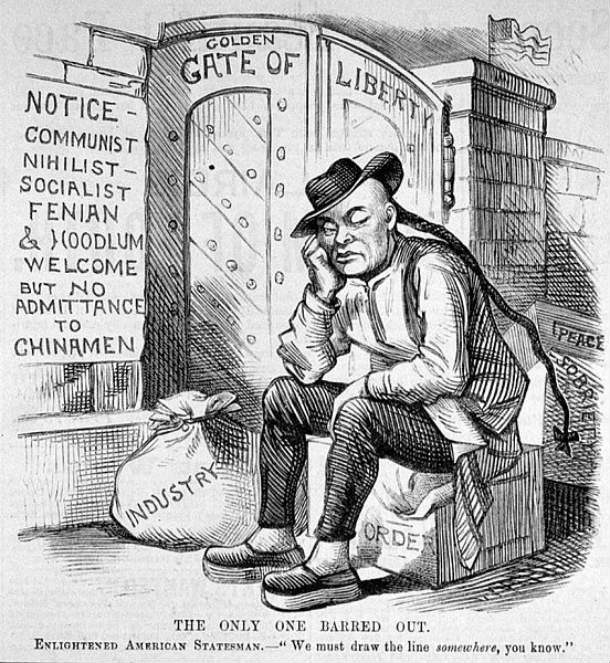 Source: civilrights.org, history.state.gov, Image: wikimedia commons (public domain: published before 1923)
Source: civilrights.org, history.state.gov, Image: wikimedia commons (public domain: published before 1923) When the country was still on the rise, many Chinese workers immigrated to the US, ready to work on the railroads and in mines, agriculture, factories, and other areas to help build up the country. However, as the success of such immigrants grew, so did a strong anti-Chinese vibe. In 1882, Congress passed the Chinese Exclusion Act and extended it in 1892.
As a “reward” for becoming an ally in the war against Germany and Japan, Congress repealed this law in 1943 and set a quota of admitting 105 Chinese immigrants a year.
Mexican Deportation of 1930
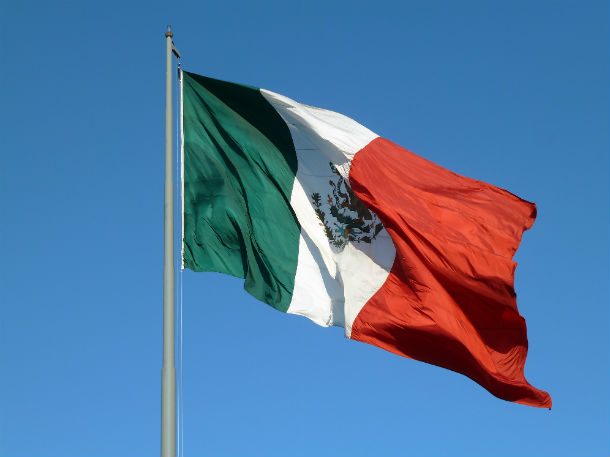 Source: civilrights.org
Source: civilrights.org While the phrase “Mexican deportation” might sound like something out of today’s news, this actually happened in 1930. After being accused of, “usurping “Americans” from jobs during the Depression,” over 400,000 Mexicans were deported, including many who had been granted US Citizenship.
Yes, you’re reading that correctly; the US government, at one point not that many years ago, actually deported its own citizens…all because they were originally born somewhere else.
No English Language Instruction
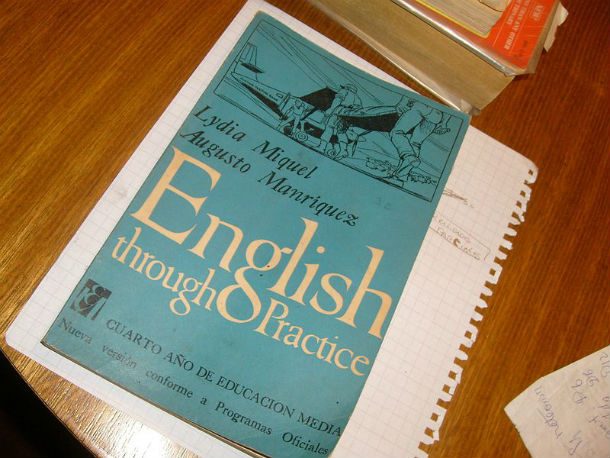 Source: civilrights.org
Source: civilrights.org Despite there being no “official language” in the US and having a large minority population, many schools would not teach English or allow for bilingual education to students speaking another language. In the 1974 Supreme Court case Lau vs. Nichols, the court held that districts receiving federal funding must provide either English language instruction or bilingual instruction whenever there are significant numbers of non-English speaking minorities.
Love the English language and all its craziness? Take a look at 25 Common Sayings And Where They Came From.
Denial of Equal Educational Opportunities to Native Americans
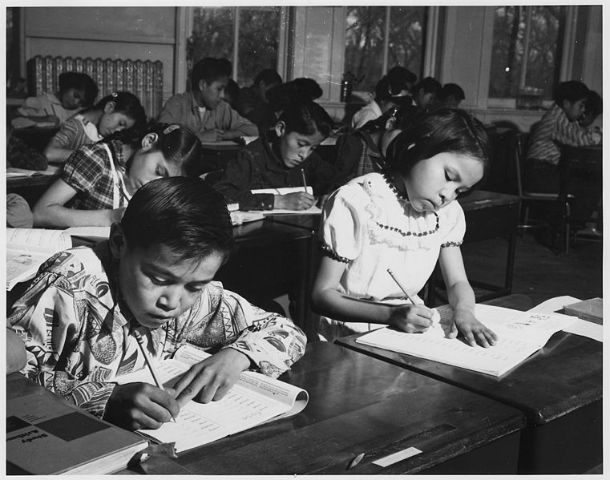 Source: civilrights.findlaw.com, Image: wikimedia commons (public domain)
Source: civilrights.findlaw.com, Image: wikimedia commons (public domain) Even after Native Americans were granted US citizenship, those that took advantage of their new status still faced obstacles. In some instances, Native American students had to travel 90 miles to get to school. It was argued that as citizens, these students deserved the right to an education within their community. Despite arguing that the students lived on a reservation, the public schools lost this lawsuit and were required to build a school within the Native American community. This lawsuit, which happened in 1997, was the first to enforce education statutes on behalf of Native Americans.
As you can see in this list, the efforts of civil rights groups like the ACLU make huge differences in society. If you want to support the efforts of ACLU in keeping our Civil Rights a reality, you can do so by donating to them here.
Lists Going Viral Right Now
Photo credits: 22. Ted Eytan via flickr, 20. Damien Bariexca via flickr, 18. wsilver via flickr, 15. Max Pixel, 14. nyphotographic via blue diamond gallery 13. Pierre-Selim via wikimedia commons, 12. Democracy Chronicles via flickr, 11. Apple Realty via flickr, 9. Joseluis89 via wikimedia commons, 8. Karen Beate Nøsterud -/norden.org, 7. Kurt Lowenstein Education Center via flickr, 3. Rob Young via flickr, 2. penarc via wikimedia commons



























